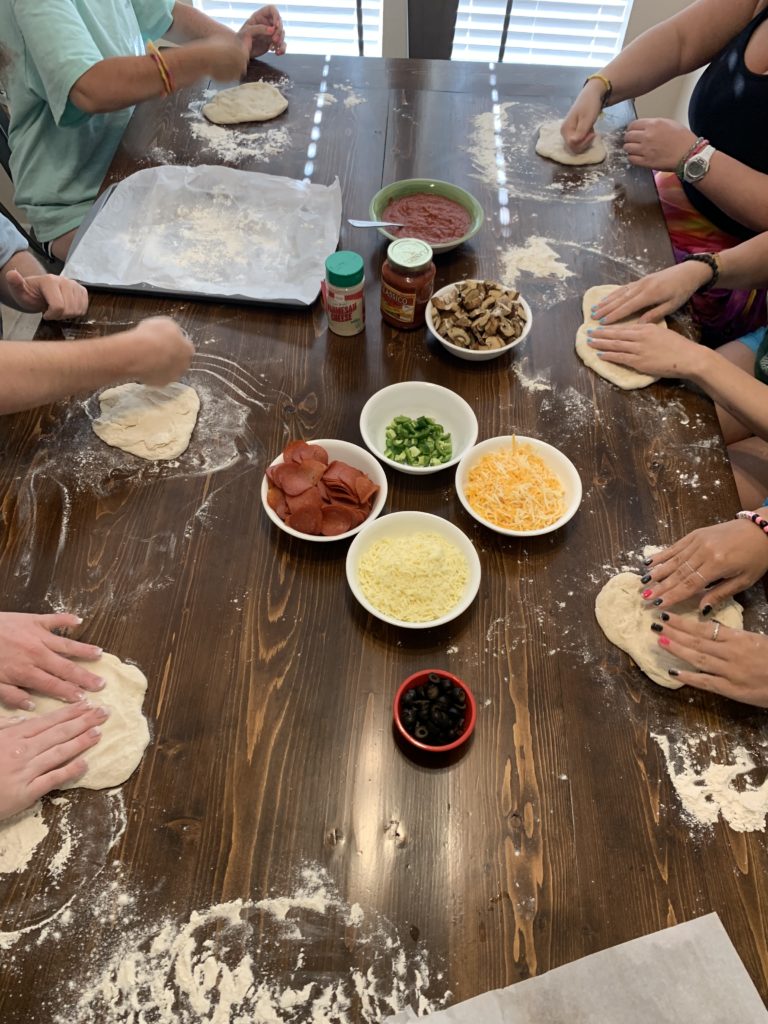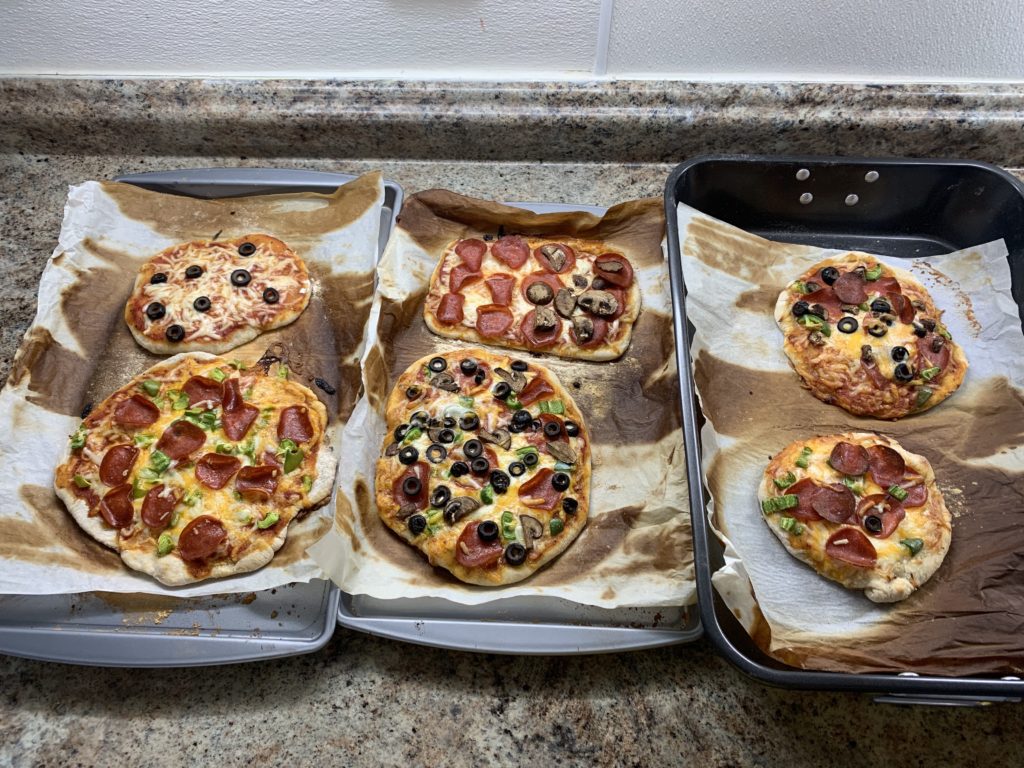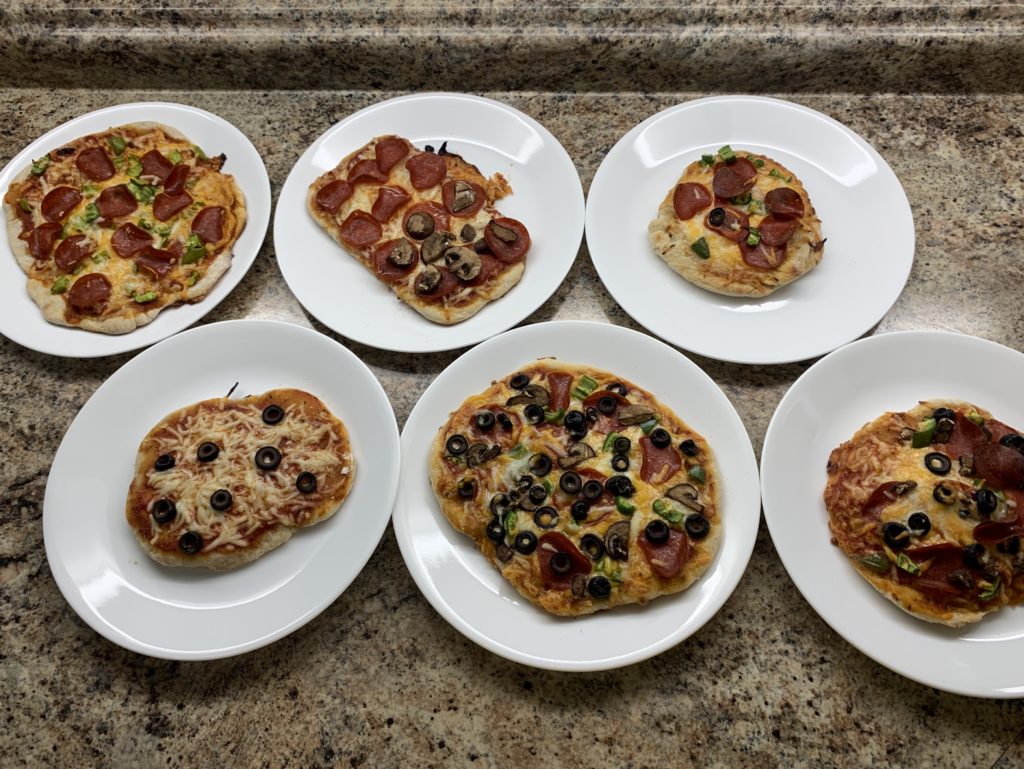This week on the menu, our residential clients learned how to make personal pan pizzas! At Eating Disorder Solutions, we incorporate fun cooking demonstrations to help clients get more comfortable in the kitchen and get outside their comfort zone! Our dietitians work with the clients to decide what challenging meal item they would like to try next. In addition, we work with our clients on exposures such as weekly trips to the grocery store to pick ingredients and practice distress tolerance among choosing between the many, often overwhelming choices!
Here’s a snapshot of our personal pizza making process! During this time, we talk about the nutritional benefits of each food item and challenge eating disorder thoughts of what society tells us is “bad food”. For example, the crust gives us carbohydrates that fuel our brain, the tomato sauce has lycopene — an important antioxidant, and the cheese gives our body fat and helps us feel satisfied! Plus, add all the vegetables you want to get extra micronutrients! We believe that in order to achieve long-term success, we have to practice life skills to be implemented outside of treatment!

During this particular meal, we encouraged everyone to “get messy”. This means practicing distress tolerance with allowing food on our hands, making a mess in the kitchen, and the imperfection of cooking!


Finally, the delicious end product! Look how different each pizza looks! I like to discuss how different plates, bowls, thickness of food (in this case the crust), changes our perceptions of the food! This means practicing challenging our eating disorders, using our wise mind, and processing how our eyes can mislead us from the truth!
Authored by Emily Baum, M.S., RDN, LD



